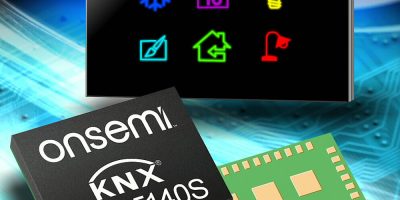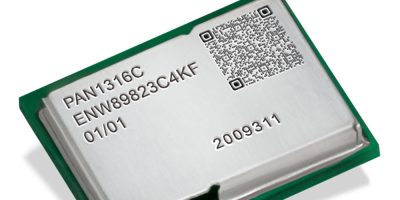Supporting the KNX and the PoE building automation protocols respectively, the NCN5140S and NCL31010 are integrated devices released by onsemi to shorten the development of smart building control panels and connected lighting.
For the development of access and control panels, the NCN5140S is the first system in package (SiP) certified with the KNX Association. The NCN5140S integrates all critical and certifiable elements of a KNX device, including a digital KNX transceiver, a 32-bit Arm Cortex-M0+ microcontroller with a pre-certified software stack, and system power DC/DC converters, into a single package. The level of integration reduces material costs, said onsemi, and allows manufacturers to develop very slim and modern designs of less than 5mm total depth.
The second introduction address PoE for Ethernet-powered connected lighting. The NCL31010 integrates an intelligent LED driver and PoE interface into a single package to support for both the lighting and power delivery needs of fully connected and managed lighting systems.
The pre-certified KNX SiP and intelligent LED driver can provide manufacturers with the latest technology and a headstart to develop complex, full-scale automation systems in a shorter time, said the company.
KNX products must demonstrate compliance to supported protocols and profiles through the association’s certification program to ensure seamless connectivity. The NCN5140S platform is pre-certified, so device KNX certification testing is not necessary. All that is needed is a KNX declaration of product modification, confirmed onsemi, eliminating the time and engineering efforts of a complete certification process.
The IEEE 802.3bt compliant NCL31010 can deliver over 90W via PoE. It integrates a Visible Light Communication buck LED driver. This involves modulating data directly onto the LED light, which remains imperceptible to the human eye, allowing it to broadcast data and function as a location beacon for use in indoor positioning systems.
The NCL31010 and the NCN5140S are available now through onsemi sales support and authorised distributors.







